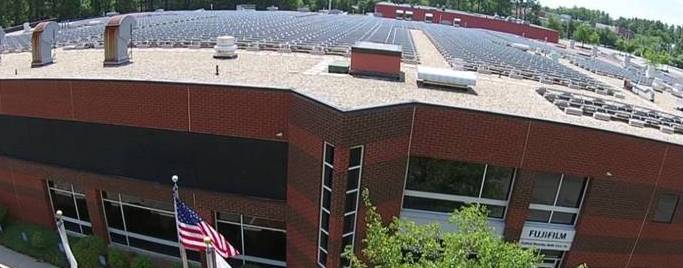From LTO-1 to LTO-8: Tape Manufacturing in Bedford, MA

In this Q&A, we talk to Andy Feather, Sr. Director, Engineering & Technical Services at FUJIFILM Recording Media U.S.A., Inc. about the company’s tape manufacturing process and robust sustainability efforts.
How long has Fujifilm been manufacturing LTO tapes in the U.S.?
We first started LTO tape manufacturing here in Bedford in September 2003. This was the start of LTO-1 and we have made every generation since then up to the current LTO-8.
How has the manufacturing process changed over the years?
At the start of LTO production, as with most start-up manufacturing processes, it was a very manual process, over the years we have added more and more automation. We’ve also refined our methods for controlling the manufacturing equipment so, for example, on the winding machines, we focus on preventive maintenance and sophisticated process control to monitor the quality during the tape winding process. This allows us to reduce the dependence on testing cartridges after they have been wound.
In our packaging operations, we have focused on improvements for the environment. We’ve introduced soy-based inks for all our printed materials and we’ve eliminated most of the paper instruction sheets and user labels. We’ve switched to recycled paper and corrugated and reduced the thickness of the plastic cases. In our latest “bulk” packaging design we have eliminated corrugated completely and reduced the use of plastic shrink film to the absolute bare minimum.

“Having our manufacturing facility in the U.S. allows us to respond quickly to any customer request.” – Andy Feather
What are the advantages of having a manufacturing facility located in the U.S.?
Having our manufacturing facility in the U.S. allows us to respond quickly to any customer request. Much of our production volume is customized with barcode labels specific to a customer’s order. We can receive the order, custom print and apply the barcode labels, and then drop ship to any location in the U.S. within 48 hours.
Was Fujifilm’s manufacturing facility impacted by COVID?
As an essential business, our manufacturing facility has remained open through the pandemic. Naturally, we took every precaution to ensure our employees remained safe, including providing masks and reorganizing the facility to accommodate for social distancing. During the peak of the pandemic last year we minimized the number of staff on-site to just the critical manufacturing employees. To achieve this we implemented working from home for as many of the administrative functions as possible. We also implemented a strict visitor policy that ensured that only visitors essential to the ongoing functioning of the manufacturing facility was permitted on-site and while on-site all visitors were required to follow the COVID restrictions,
What changed during COVID and have you kept some of the new processes you may have implemented?
As the pandemic thankfully subsided in the fall of last year we were able to relax some of the restrictions and gradually bring more people back into the facility. We still have people working from home and continue to social distance while in the facility. With the experience from last year, we are looking at our work from home policy to allow continued flexibility for our employees where possible.
What are some of the green initiatives manufacturing has initiated?
The solar panel installation project at our Bedford manufacturing facility began in response to a FUJIFILM corporate mission of energy conservation and Greenhouse gas reduction to address issues of climate change. With 1,870 solar modules, our solar installation has produced 2,977,000 kWh since its inception in November of 2013. That is the equivalent amount of energy used by 4,666 homes during an entire month. It is also the equivalent to a reduction of 1,787 metric tons of carbon dioxide per year. Over 20 years, this would equal the carbon sequestered by 7,280 acres of U.S. forest in one year.
In addition to our solar panels, we have just recently converted to LED lighting in our manufacturing facility. By converting to LED bulbs we will reduce our carbon footprint by approximately one-third, minimize daily maintenance work, decrease our UV emissions to zero and overall be more energy efficient. With over 3,000 bulbs replaced, we estimate a savings of 400,000 kWh this year!
Of course, tape is the greenest form of data storage available consuming 87% less energy than the equivalent hard drive storage.
What are some of the largest accomplishments manufacturing has achieved that you are particularly proud of?
Fujifilm continues to innovate the technology of LTO tape working with our OEM partners to further enhance the performance of LTO tape cartridges. As each successive generation of LTO is released, tape cartridge capacity and performance increase which naturally imposes tighter and tighter requirements on the tape, the cartridge, and all the components that go into the product. In manufacturing, we’ve been able to innovate the production processes to stay ahead of the technical challenges of manufacturing a product that operates in the realm of sub-nanometer tolerances. We’ve achieved this through a continual focus on automation and the dedication and expertise of our engineers and technical personnel.
